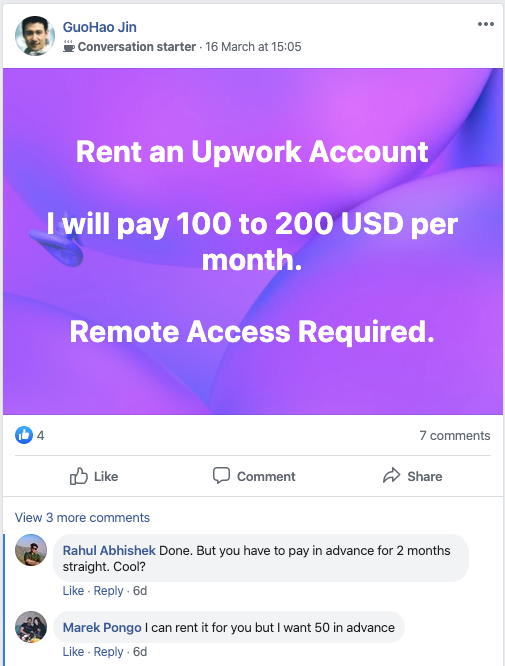
Originally posted on Forbes.com
As many say costs for software developers have soared across the U.S. and Western Europe, outsourcing to arbitrage labor costs has not just become popular but also increasingly necessary.
To build two SaaS companies in the Bay Area, I’ve leveraged offshore development teams to a degree of success. I also had a chance to be a marketing consultant for a leading online marketplace for developers and am the CEO of an outsourcing company, so I’ve become intimately familiar with this industry over my career.
There are many talented, ethical agencies and developers across the world; however, just like in any market, extensive due diligence by the client is a must. Before hiring outsourcers to build your app or hiring recruiters to source offshore labor, here are three insider observations you might consider:
1. Outsourcers, outstaffers and recruiters commonly portray interns as juniors, juniors as mid-levels and mid-levels as seniors. Because this practice has become so widespread, I’ve found there is market pressure on many good vendors to sell their staff this way. So clients should manage their projects intensely on a daily basis to ensure consistency and quality.
2. Failure rates for apps built by outsourcers can be incredibly high. While there is no published data yet, I’ve seen very few examples of outsourcers who have built and launched a commercially successful product on behalf of a client as a turnkey service.
3. I’ve seen some recruiters start to offer research and development (R&D) center services to clients to compete with outsourcers. This new trend of not only sourcing the developers but operating the office and administrative functions on behalf of the client have additional fees. Over time, this could reduce labor costs for the clients, but clients need to make a bigger upfront commitment.
Given the state of the current market, I suggest implementing these best practices before engaging any outsourcing, outstaffing or recruiter firm:
1. For outsourcers building the entire turnkey app for you, ask for the references of at least two software applications they have launched successfully. Code is only one part of what makes a software application successful, so if the response is “we have none” but you still like the firm, you can engage your product or project manager to manage the outsourced staff directly.
Also, ask the references how the outsourcer accommodated change requests. Your app’s scope or project is likely to change multiple times. You want a partner who is adaptive, but being adaptive in IT can be as much about the outsourcer’s culture as it is about their process.
2. If you’re looking to outstaff to add to your existing product and team through recruiters or R&D centers, you may want to intensely focus on the interview questions and test tasks assigned to the candidates. For example, when I ask a candidate, “Why do you want to work for us?” and the answer is something akin to “for more money” and not “I want to work for a ‘product’ company,” that developer never lasts with us for more than a year.
I’ve also learned to ask what local conferences or Meetups the candidates belong to. Voluntary self-education is one of the leading indicators I’ve seen in how much value a developer will bring to our projects over the long run.
But by far, the “marquee” question I ask every developer is, “Have you contributed to any open-source projects?” While not every top developer contributes to open-source projects, I’ve noticed that many open-source contributors are top developers.
It may be harder to find developers who contribute to open-source projects in emerging economies, according to a GitHub open-source contribution map, but we’ve found this is the single biggest determinant (other than cultural fit) of whether a developer will produce at an elite level.
3. Go through a trial period without firm commitments, and if the developers are to your liking, prepare to offer a term commitment of a year or more to the vendor. In my experience, outsourcers and outstaffers often have their developers sitting “on the bench” some of the time, so term commitments mean they don’t have to suffer a margin loss — and you could negotiate some of this savings in reduced fees.
As a negotiating tactic, you can also offer to prepay their wages quarterly or every six months.
4. Look for providers that focus on both a vertical and a software language. I believe the vendors that are efficient with your time and money are so because they focus on a specific vertical — like fintech or mobile games — and have expertise in one or two languages.
I recommend avoiding shops that claim to be experts in “Java, Python, C++, and AI/ML” and that spam you with faces of attractive females representing their agency’s expertise. These are often bottom-of-the-barrel operators. I’ve found that most of the good shops specialize in a vertical and specialize in a language, and they have plenty of work from referrals — so they don’t need to spam anyone.
5. Negotiate the monthly wages and the buyout fee if you decide to make the developers a part of your permanent team. Outsourcers and outstaffers need to charge more than what they pay the developers to make reasonable net margins.
Sales costs, office space, recruiting and bench-time contribute to overhead. In my experience, average buyout fees range from one month of wages to one year, so negotiate — as the market prices range drastically.
As Bloomberg suggests, the demand for talented and experienced tech talent in the U.S. continues to rise, and the BLS reports that unemployment for the professional, scientific, and technical services sector was at just 2.5% in December 2018 — so sourcing labor from other countries may become a necessity, even for Series B- and C-funded startups. Understanding nuances of the regions where you hire and following some best practices should save you a lot of time and money — and maybe some midnight migraines as well.



